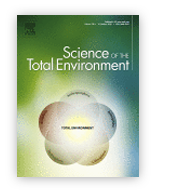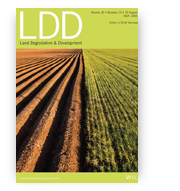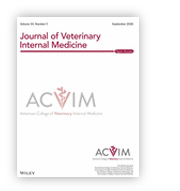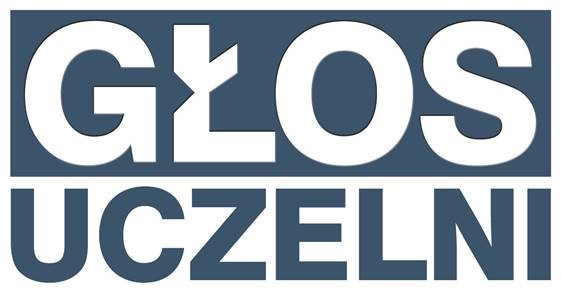Research papers of the month – July 2022
We present the highest-score research papers of July 2022. These papers have ben published in journals with the highest Ministerial score – 200 points.
Towards circular economy: Sustainable soil additives from natural waste fibres to improve water retention and soil fertility
Daria Marczak, Krzysztof Lejcuś, Grzegorz Kulczycki, Jakub Misiewicz
Science of the Total Environment
Ministerial score = 200.0
Journal Impact Factor (2021) = 10.753 (Q1)
 Human activity is accompanied by the introduction of excessive amounts of artificial materials, including geosynthetics, into the environment, causing global environmental pollution. Moreover, climate change continues to negatively affect global water resources. With the intensification of environmental problems, material reusability and water consumption limitations have been proposed. This study replaced synthetic soil additives with biodegradable materials and analysed the potential and sustainable processing of natural fibrous materials, which form problematic waste. Waste fibres are the basis of innovative soil water storage technologies in the form of biodegradable and water-absorbing geocomposites (BioWAG). We analysed the influence of BioWAGs on plant vegetation and the environment through a three-year field experiment. Furthermore, biomass increases, drought effect reductions, and biodegradation mechanisms were analysed. Natural waste fibres had a positive influence, as they released easily accessible nutrients into the soil during biodegradation. BioWAGs had a positive influence on the biometric parameters of grass, increasing biomass growth by 430 %. Our results indicated that this is an effective method of waste fibre management that offers the possibility to manufacture innovative, environmentally friendly materials in compliance with the objectives of circular economy and the expectations of users.
Human activity is accompanied by the introduction of excessive amounts of artificial materials, including geosynthetics, into the environment, causing global environmental pollution. Moreover, climate change continues to negatively affect global water resources. With the intensification of environmental problems, material reusability and water consumption limitations have been proposed. This study replaced synthetic soil additives with biodegradable materials and analysed the potential and sustainable processing of natural fibrous materials, which form problematic waste. Waste fibres are the basis of innovative soil water storage technologies in the form of biodegradable and water-absorbing geocomposites (BioWAG). We analysed the influence of BioWAGs on plant vegetation and the environment through a three-year field experiment. Furthermore, biomass increases, drought effect reductions, and biodegradation mechanisms were analysed. Natural waste fibres had a positive influence, as they released easily accessible nutrients into the soil during biodegradation. BioWAGs had a positive influence on the biometric parameters of grass, increasing biomass growth by 430 %. Our results indicated that this is an effective method of waste fibre management that offers the possibility to manufacture innovative, environmentally friendly materials in compliance with the objectives of circular economy and the expectations of users.
DOI:10.1016/j.scitotenv.2022.157169
Restoration of ecologically valuable grassland on sites degraded by invasive Solidago: lessons from a 6-year experiment
Magdalena Szymura, Sebastian Świerszcz, Tomasz H. Szymura
Land Degradation & Development
Ministerial score = 200.0
Journal Impact Factor (2021) = 4.377(Q2)
 Most semi-natural grasslands are threatened by invasive alien plants, which have also overgrown abandoned fields. We conducted a 6-year experiment testing different methods of eliminating invasive Solidago species and adding seed to restore valuable species-rich grassland. Three removal treatments (herbicide spraying, rototilling, turf stripping) and two seed addition methods (direct sowing of a fast-growing grass species mixture, spreading of fresh hay collected from a semi-natural meadow) were examined alongside control treatments (no removal, no seed addition). The experimental plots were mowed twice a year, and the vegetation composition, biomass production, hay chemical composition, and fodder quality were assessed. Mowing twice a year significantly reduced Solidago cover. Although significant differences were observed in the invaders' cover between the removal treatments and between the seed addition methods early in the study, the differences lessened over time, especially for the removal treatments. By the end of the 6-year study period, the Solidago cover was reduced to 25% of the initial complete coverage. Spreading fresh hay greatly reduced Solidago biomass and yielded the highest characteristic species cover. Herbicide treatment was no more efficient than the more environmentally friendly methods over the study period. The results suggest that fresh hay is good method of seed addition for restoring old fields overgrown by invasive Solidago. With mowing of the restored area twice a year for several years, Solidago removal by turf striping (scalping) followed by the spreading of fresh hay is recommended for grassland restoration given its environmental impact, cost, and hay quality.
Most semi-natural grasslands are threatened by invasive alien plants, which have also overgrown abandoned fields. We conducted a 6-year experiment testing different methods of eliminating invasive Solidago species and adding seed to restore valuable species-rich grassland. Three removal treatments (herbicide spraying, rototilling, turf stripping) and two seed addition methods (direct sowing of a fast-growing grass species mixture, spreading of fresh hay collected from a semi-natural meadow) were examined alongside control treatments (no removal, no seed addition). The experimental plots were mowed twice a year, and the vegetation composition, biomass production, hay chemical composition, and fodder quality were assessed. Mowing twice a year significantly reduced Solidago cover. Although significant differences were observed in the invaders' cover between the removal treatments and between the seed addition methods early in the study, the differences lessened over time, especially for the removal treatments. By the end of the 6-year study period, the Solidago cover was reduced to 25% of the initial complete coverage. Spreading fresh hay greatly reduced Solidago biomass and yielded the highest characteristic species cover. Herbicide treatment was no more efficient than the more environmentally friendly methods over the study period. The results suggest that fresh hay is good method of seed addition for restoring old fields overgrown by invasive Solidago. With mowing of the restored area twice a year for several years, Solidago removal by turf striping (scalping) followed by the spreading of fresh hay is recommended for grassland restoration given its environmental impact, cost, and hay quality.
DOI:10.1002/ldr.4278
The cannabinoid receptors system in horses: Tissue distribution and cellular identification in skin
Piotr Kupczyk, Marta Rykała, Paweł Serek, Aleksandra Pawlak, Bartosz Słowikowski, Marcin Hołysz, Grzegorz Chodaczek, Jan Madej, Piotr Ziółkowski, Artur Niedźwiedź
Journal of Veterinary Internal Medicine
Ministerial score = 200.0
Journal Impact Factor (2020) = 3.175 (Q1)
 Background The endocannabinoid system (ECS) is composed of cannabinoid receptors type 1 (CBR1) and type 2 (CBR2), cannabinoid-based ligands (endogenous chemically synthesized phytocannabinoids), and endogenous enzymes controlling their concentrations. Cannabinoid receptors (CBRs) have been identified in invertebrates and in almost all vertebrate species in the central and peripheral nervous system as well as in immune cells, where they control neuroimmune homeostasis. In humans, rodents, dogs, and cats, CBRs expression has been confirmed in the skin, and their expression and tissue distribution become disordered in pathological conditions. Cannabinoid receptors may be a possible therapeutic target in skin diseases. Objectives To characterize the distribution and cellular expression of CBRs in the skin of horses under normal conditions. Animals Fifteen healthy horses. Methods Using full-thickness skin punch biopsy samples, skin-derived primary epidermal keratinocytes and dermal-derived cells, we performed analysis of Cnr1 and Cnr2 genes using real-time PCR and CBR1 and CBR2 protein expression by confocal microscopy and Western blotting. Results Normal equine skin, including equine epidermal keratinocytes and dermal fibroblast-like cells, all exhibited constant gene and protein expression of CBRs.
Background The endocannabinoid system (ECS) is composed of cannabinoid receptors type 1 (CBR1) and type 2 (CBR2), cannabinoid-based ligands (endogenous chemically synthesized phytocannabinoids), and endogenous enzymes controlling their concentrations. Cannabinoid receptors (CBRs) have been identified in invertebrates and in almost all vertebrate species in the central and peripheral nervous system as well as in immune cells, where they control neuroimmune homeostasis. In humans, rodents, dogs, and cats, CBRs expression has been confirmed in the skin, and their expression and tissue distribution become disordered in pathological conditions. Cannabinoid receptors may be a possible therapeutic target in skin diseases. Objectives To characterize the distribution and cellular expression of CBRs in the skin of horses under normal conditions. Animals Fifteen healthy horses. Methods Using full-thickness skin punch biopsy samples, skin-derived primary epidermal keratinocytes and dermal-derived cells, we performed analysis of Cnr1 and Cnr2 genes using real-time PCR and CBR1 and CBR2 protein expression by confocal microscopy and Western blotting. Results Normal equine skin, including equine epidermal keratinocytes and dermal fibroblast-like cells, all exhibited constant gene and protein expression of CBRs.
DOI:10.1111/jvim.16467










